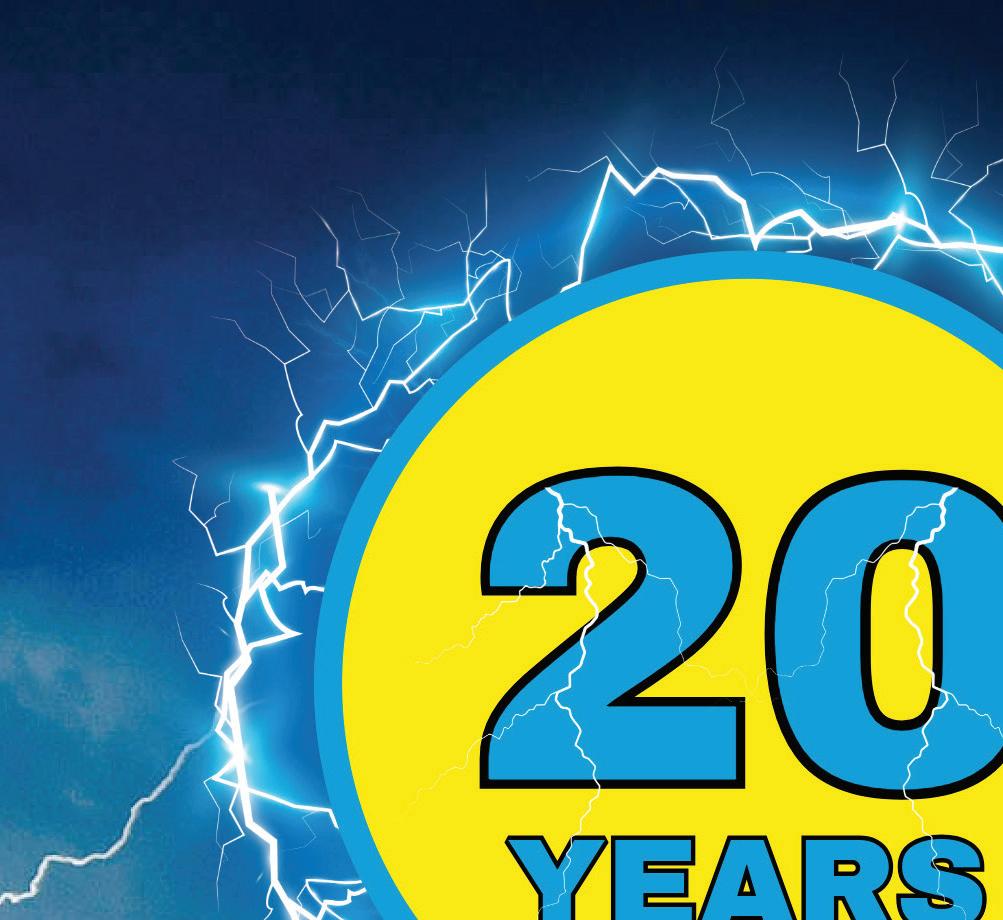

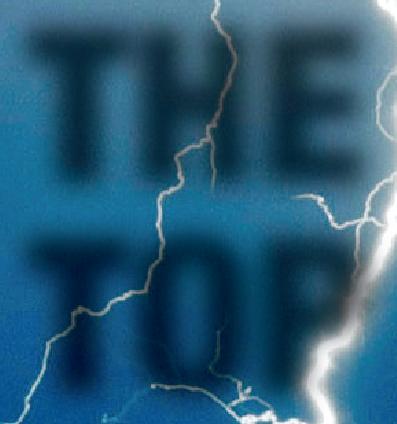






IN ASSOCIATION WITH:

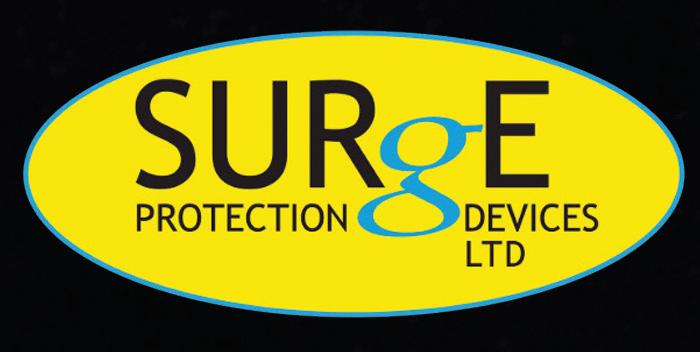

20 years of protecting your vital electrical systems

Every year, the Top 50 Electrical Contractors report gives us a snapshot of where the industry is heading, and this year’s list tells a story of a sector that is anything but static. Growth, change, and a fair bit of reshuffling define the 2025 results, with several contractors making big leaps thanks to acquisitions, expanding workloads, and the continued boom in data centres and energy-related projects.
One of the standout themes this year is momentum. Even though the top 50 as a whole delivered steady turnover growth, the top of the table saw dramatic movement, with a handful of companies posting especially strong results. Acquisitions played a noticeable role here, bringing new opportunities and sizeable project backlogs into the mix. Profitability has also improved across much of the list. More businesses returned positive figures this year, and many saw stronger profit growth than we’ve typically seen in recent editions of

LISA PEAKE EDITOR, ELECTRICAL TIMES
the report. It’s a reminder that, even in a market shaped by shifting regulations and economic pressure, contractors are still finding ways to strengthen their positions.
We also saw higher profit per employee and improved return on sales among the top performers, hinting at greater efficiency and a more confident sector overall. With office construction gaining pace again and continued demand from energy, housing, and data infrastructure, the outlook remains upbeat. There’s a sense that the industry is adjusting well to new legislation, new expectations, and the changing shape of the built environment.
As always, this year’s Top 50 highlights not only the numbers but the wider direction of travel. The electrical contracting sector continues to show resilience, adaptability, and an ability to make the most of the opportunities in front of it — and that’s reflected clearly in the pages that follow.



Halsall Electrical Limited have hit the top highest profit growth for this year showing a remarkable 2,618 per cent increase in profit, a surprising recovery since last year’s profit loss. Dalkia Operation Limited with a profit growth of 318 per cent and DMG Engineering Limited with 283 per cent, are in second and third place respectively. This growth may be related to their involvement in the emerging energy sector. Compared to last year, where only 10 companies showed 50 per cent growth, this year, 16 companies show profit growth, with a combined average of 145 per cent (excluding the first-place contender as it is an outlier on this data). There is a comparative higher number of companies achieving a
with
Keeping your electrical systems and essential technology safe is what we’re all about. At Surge Protection Devices Ltd, we’re proud to be the UK’s go-to team for lightning and surge protection. With almost twenty years under our belts, we’ve solved all kinds of tricky problems, and in the past seven years, our experience matters more than ever, especially since the UK’s BS7671 wiring rules started calling for extra surge protection in our installations.

You will fi nd our surge protection devices just about everywhere— military bases, historic landmarks, factories, and family homes. These devices are built to protect your electrical setup from sudden surges and lightning strikes. Nowadays, with everything from smart fridges to smart phones running on sensitive electronics, reliable surge protection is critical for keeping electrical installations safe and running smoothly.
All about safety
We’re not just about making and selling products—we care about the safety and reliability of the entire electrical industry. Our Technical Director, Kirsty Johnson MIET, brings her expertise to the British Standards Wiring Regulations committee, focusing on lightning and surge protection. We are dedicated to making sure our industry sticks to the highest safety standards, which is why we were thrilled to be announced as the Innovation & Excellence Awards – Electrical Safety Specialists of the Year 2025!
We love helping everyone in the electrical fi eld get better at what they do. That is why we don’t just offer top-quality surge protection devices—we also give away free, indepth CPD training. Whether you’re part of a big-name consultancy or you’re just starting out as an apprentice, we’re here to share valuable technical know-how with you, explained in a way that makes surge protection easy to understand and easy to apply to your electrical installation, no matter how complicated the infrastructure may seem.
The electrical world is always changing and absolutely crucial, with safety always in the spotlight. As top-notch electrical design becomes more important for every kind of infrastructure, and as we work towards Net Zero goals in renewables, Surge Protection Devices Ltd is here to help. We’re not just delivering great products—we’re here with outstanding support and expertise, pushing safety standards higher for everyone.
What’s next?
Here at Surge Protection Devices, we are entering in to our 20th year in business in 2026, which is a massive milestone. As such, you will see us out and about celebrating with the electrical industry that has helped us grow. If you see any of the team out in 2026, please come and say hello!
If we can be of any help with any aspect of surge protection, feel free to get in touch via info@surgedevices.co.uk or 01484 851 747.
The Top 50 Electrical Contractors is analysed each year using a previously agreed pool of 60 contractors, to allow annual comparisons. This list is updated periodically to allow for new entrants into the data set.
Providing an overview of the performance of the market in this context is challenging, as the table includes different annual reporting periods and, in some cases, covers activities other than electrical contracting.
The recent analysis of turnover, profi t growth, profi t per employee, and return on sales within the electrical contracting sector shows significant advancements and shifts in performance refl ective of mergers and acquisitions reported recently for those same companies.
Turnover growth reached an impressive average of 77 per cent among the top
10 companies, with the highest performer showing a remarkable increase of 183 per cent, an average that should be carefully appraised as it is the likely result of acquisition of the number one ranker by an American company, who has a heavy backlog or projects (among them data centres) and plans for expansion. The overall top 50 companies maintained an 18 per cent average turnover growth. This growth balance indicates consistent opportunities within the market. Further supporting this optimistic scenario, profi t per employee across the top 50 companies averaged at 16 per cent, with fewer companies reporting negative figures since last year. The return on sales also highlighted strong performance, with the average for the top 10 being 11.16 per cent, alongside a corresponding increase among the top 50.
Lastly, more than just the shifts in rank, the top 35 profi t rank averaged £6,932 million, an increase in last year and one more factor to encourage further investment in the sector.
The continued effects of office construction gaining momentum along with key sectors such as energy and data warehouses severely contributing to growth in the sector have influenced this year’s observed results. The market is estimated to continue to grow from 2025 to 2026 largely due to the pressures coming from new legislation regarding safety standards requiring remodelling of existing buildings and the government mandate for new house building.
The sector’s resilience and adaptability in face of recent challenges underscores a promising outlook for the coming years.




By this point, I should imagine that you are quite familiar with the term SPD (surge protection device) but there are still so many questions surrounding the use and application of surge protection devices, below details an introduction to what type of device is needed and when surge protection is required under BS7671.
What to install
There are three types of SPDs depending on what you want to protect.
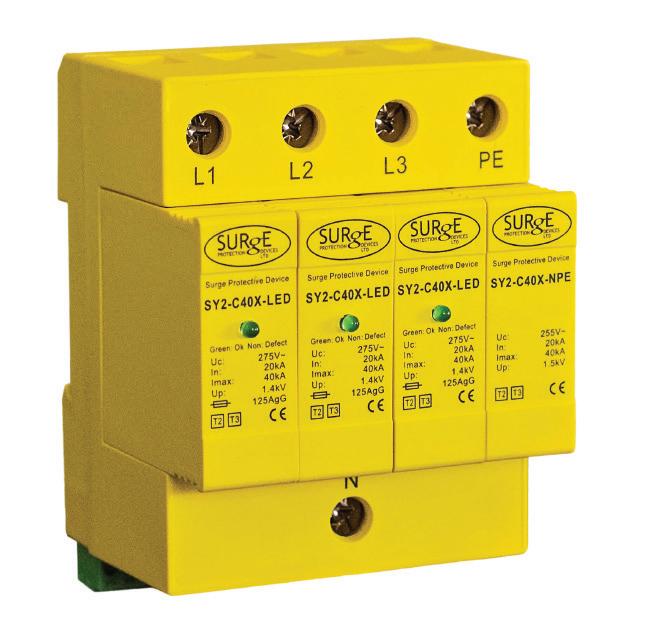
If you are looking to protect a distribution board or consumer unit, it will be a type 1 or type 2 SPD. If you wanted to protect a specific piece of equipment, such as a fuse spur or single socket, it would be a type 3.
A Type 1 device would only be required where there is an external lightning protection system or the installation has an overhead supply
For all other circumstances, a type 2 device will be sufficient to provide adequate protection for distribution boards.
Where protection against overvoltages is required for specific equipment, a type 3 device may be used to provide protection.
When are SPDs required
Protection against transient overvoltages shall be provided where the consequence caused by overvoltage could:
i. Result in serious injury to, or loss of life
ii. Deleted by Corrigendum May 2023
iii. Result in significant financial loss or data loss
For all other cases, SPDs shall be fitted to protect against transient overvoltages, unless the installation’s owner declines such protection



Dornan Engineering Services Limited has had an outstanding turnover this year showing a turnover growth of 183 per cent, a likely result of its acquisition by an American construction company. Among the top 10 companies, the average turnover growth reached 77 per cent. This average might be slightly inflated by our first place taker as growth from 4th to 10th place only ranges between 80 per cent to 37 per cent. But still, a great reflection of rising opportunities within this sector as the overall average for the top 50 this year has maintained a similar score to last year (18 per cent growth).

and wishes to accept the risk of damage to both wiring and equipment as tolerable.
The requirement to install SPDs where the consequences could result in serious injury to, or loss of human life is the most onerous requirement. This will mean that any distribution board supplying electrical equipment that is installed to protect life or prevent injury will require an SPD.
Indent three is similar to the previous requirement where an SPD should be installed where commercial or industrial activity could be interrupted, the requirement now is that an SPD shall be provided where the consequence caused by overvoltage could result in significant financial or data loss.
The basic position of section 443 is now that SPDs shall be installed. In practical terms, most installations will have distribution boards that require surge protection due to the indents above, so it would only be distribution boards that did not require surge protection, as no circuits outlined in regulation 443.4.1 were
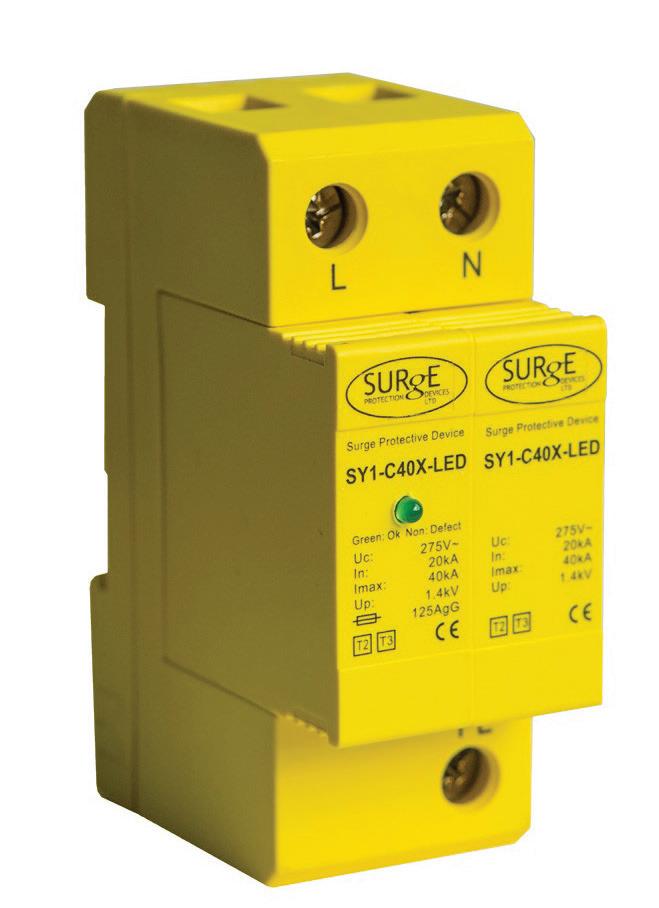
present. Then a discussion is encouraged between the electrical designer and the client to ensure that no unacceptable losses occur from overvoltage, while also considering the requirements to protect against switching overvoltages from regulation 443.4.2.
Something important to remember is that if the building has an external lightning protection system, then the requirements of BS EN 62305 apply, which means that a Type 1 SPD is a requirement in these cases and BS 7671 do not apply. Where the building has an external lightning protection system, a Type 1 SPD will be required on the main incomer and any distribution boards supplying external circuits.
I hope this article has provided some guidance on the requirements from BS 7671:2018, if you have any further questions, please do not hesitate to get in touch.
If you wish to discuss this topic further, or want to know more about the use of SPD’s, contact the surge protection experts on 01484 851747, or email us at info@surgedevices.co.uk.



This year, AVK/SEG (UK) Limited is leading on profit per employee showing a £125k, further reinforcing their performance on other categories. Halsall Electrical Limited with 87 per cent and Halsion Limited with 52 per cent follow up in second and third respectively. The top 10 electrical contractors averaged approximately 49 per cent profit (including the first place contender) showing an increase since last year’s figures and a positive outlook for the sector. Among the top 50 companies, the average profit per employee stands at 16
marking an
and a
trend compared to last year, as fewer companies are reporting negative profit per employee.

The number of solar PV installations is on the rise, but one of the aspects of PV system design that is often overlooked is surge protection. BS7671:2018 section 443.4, which gives the requirements for when surge protection shall be installed, covers both AC and DC installations, this is something that is often not considered when we consider where surge protection is required. In section seven for special locations, we also have regulation 712.443.101 states that where protection against transient overvoltage is required by section 443, such protection shall also be applied to the DC side of the PV installation. So, if the solar installation as on the roof of a building where the regulations in section 443 require SPD’s to be installed, SPDs also need to be installed on the DC side of the installation to protect the inverter.
Some inverters state that they include overvoltage protection. For an incorporated SPD to fulfil the requirements of the wiring regulations, the manufacturer must specify that it is installed on the DC side of the inverter, as this ensures that it is providing protection on the correct side of the inverter. There are quite a few inverters on the market
which say they have overvoltage protection included, when in actual fact, it is only providing protection on the AC side of the system. It must also state the type of SPD, the reason it is important for the type of SPD to be mentioned is that once a device is specified as a type it must conform to the product standard BS EN 61643-31 as some manufacturers incorporate individual varistors, which are not considered to be a complete surge protection device. If you are unsure and want to check the technical credibility of an inverter, I would advise you to request a certificate of conformity, which will list the standards that the equipment conforms to.
Another consideration is that the inverter will only ever include a Type 2 surge protection device, so if the building has an external lightning protection system, the installation will always require the use of external Type 1 SPDs to conform to BS EN 62305, as the cables will cross between the lightning protection zones.
When a PV system is installed on a building with an external lightning protection system (LPS) the PV system should be separated from all parts of the LPS in accordance with BS EN 62305-3. This is referred



1
The average return on sales across the top 10 is 11.16 per cent and across the top 50 contractors is 4.33 per cent, an increase versus last year. The top three performers show a return on sales of 18,67 per cent (Premier Electrics Limited), 17,61 per cent (Halsall Electrical Limited) and 11.44 per cent (Wingate Electrical Plc) DMG Engineering Limited and Quartzelec Ltd are two noteworthy entrants as they rise to notoriety versus last year with a 10.34
and 10.30 per
return on sales respectively. This year is filled with new
and is
by
by
and some mergers and acquisitions.
to as the separation distance. This distance must be adhered to between the LPS and any metal work to ensure that no dangerous arcing can occur. If the separation distance is not met, then the metal work must be bonded to the LPS, therefore becoming part of the lightning protection system. More information on separation distances can be found in BS EN 62305, but it is important to note that the separation distance depends on different parts of the lightning protection risk assessment carried out for each individual building, and therefore will be included in the LPS paperwork, if available. This calculation should only be carried out by someone with experience in the lightning protection field. If the separation distance is not met and therefore the PV system has become part of the LPS then the SPD required will need to be a Type 1, as mentioned above, this will always be external from the inverter.

DC side of a solar PV installation should be used. This is due to the continual loading and higher voltages of PV systems. The devices designed for the use on the DC side of PV systems are clearly marked with the PV symbol, as per the requirements in BS EN 61643-31. Also, they look slightly different, with the live and neutral terminals being replaced by a positive and negative terminal.
Selection of a PV SPD is quite simple. From the above, you should know what type of SPD you need. The only other information needed is the operating capacity of the inverter, which is usually 600V or 1,000V. There are some specialist systems which are different, and there are devices available for those too, but for simplicity we will stick with the 600V & 1,000V options. That gives four options of devices.
From experience, there are not many installations that correctly conform to these separation distances, so as a general rule, if the building has an LPS a Type 1 SPD should be installed on the DC side of the installation. For all other PV systems, a Type 2 SPD will provide adequate protection.
Although the SPDs are still defined as Type 1 and Type 2 devices, they are different to the SPDs we see used on the AC electrical systems and only SPDs that are designed for the specific use on the
Now we have the correct device selected, we can move on to installation. As with our AC SPDs, our DC SPDs are installed in parallel with the string. Usually a DC isolator would be used. DC SPDs should be installed one per string to provide protection, although in some situations it may be possible to protect multiple strings with one SPD, depending on the installation design.
For more information, call 01484 851747, or email us at info@ surgedevices.co.uk.



AVK/SEG (UK) Limited is a top ranker once more on general profit rank, occupying the first place with £23,891 million in profit Emcor Group (UK) Plc occupies second place with £21,054 million in profit, falling from first place since last year, and it is followed by NG Bailey Group Limited in third place with £17,700 million in profit. The average pre-tax profit for the top 35 companies this year is approximately £6,932, reflecting an increase from last year and indicating ongoing sequential growth following a rise in the previous year as well.
NG Bailey Group Limited
Dalkia Group Limited
SES (Engineering Services) Limited
Emcor Group (UK) Plc
AVK/SEG (UK) Limited
Phoenix Me Limited
Integral Uk Limited
Dodd Group Limited
Skanska Rashleigh Weatherfoil Limited
Atalian Servest Amk Limited
Gratte Brothers Limited
Dornan Engineering Services Limited
Enerveo Limited
Essex Services Group Limited
CBES Limited
Systems adi Group Limited
FES Ltd
Dalkia Operations Limited
Equans FM Limited
Lorne Stewart Plc
John Turner Construction Group Ltd
The Barnes Group Limited
Tilbury Douglas Engineering Limited
P.I.P. Electrics Limited
Quartzelec Ltd
EJ Parker Technical Services
Derry Building Services Limited
Carter Synergy Limited
Halsion Limited
Mace Construct Specialist Services Limited
Bancroft Limited
Clarkson Evans Limited
Wingate Electrical Plc
Stothers (M. & E.) Limited
LJJ Ltd



